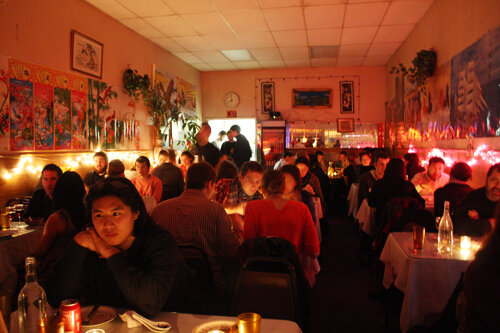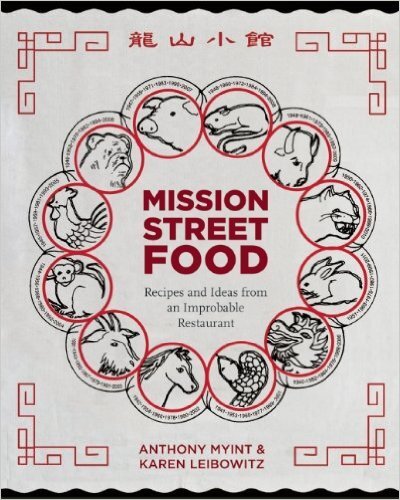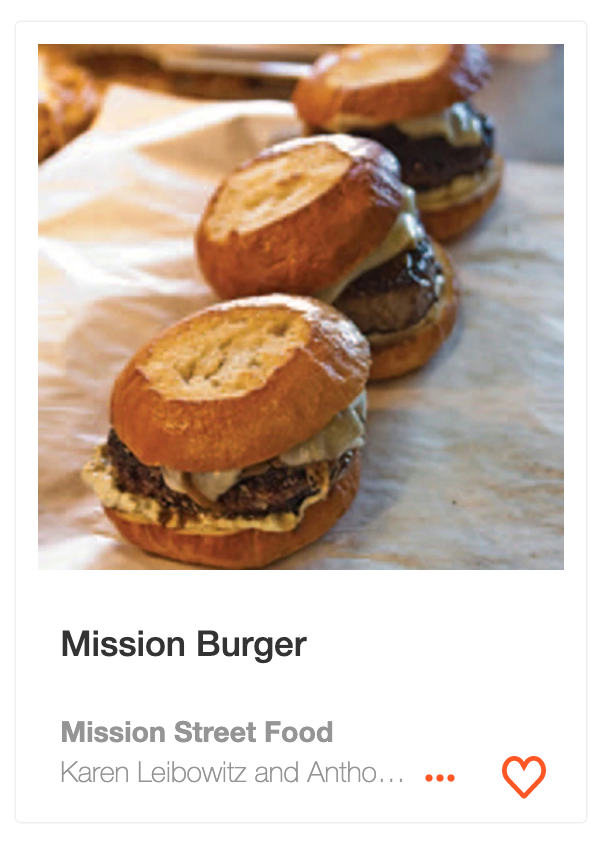Advertisement
Behind the Cookbook: Anthony Myint on Mission Street Food
16 February 2020 · Behind the Cookbook
Recipes and lessons from the restaurant that asked “Why Not?”

Image from cookingblog.partiesthatcook.com
The Mission Street Food cookbook is itself a “behind the scenes” look at what was really one heck of an “improbable restaurant.” And so, now, finally, it's the moment we’ve been waiting for—unbeknownst to ourselves, and almost a decade later—writing a behind the scenes for the behind the scenes (!). Where to begin? . . .
This oddball “cookbook” is as much a snapshot of what turned out to be kind of an important food-moment, as it is instructions for food-preparation. The whole endeavor was one “why not?” after another. And this is reflected in the faux business model that opens the book: Why not disregard pretty much every single restaurant convention? Why not make things interesting!?!
Similarly, the cookbook disregards conventions of the time, like expertise. We openly admit to inventing a whole restaurant genre on the fly, and often with no idea of what would happen the next week. We admit that we pieced dishes together, from equal parts of need to make the ingredients into a wordplay, as typical factors, like having tasted the dish at least once before serving it. But hopefully this demystifies "the restaurant" and brings the reader totally into the world of possibility: “Why not be the chef of a restaurant for just a day?” “Why not just throw a party where you also charge money for food?” “Why not have joke dishes and real dishes--side by side?” “Why not have a Chinese restaurant serving Mexiterranean food on Thursday and an homage to noma on Saturday?”
I think because the book was cranked out while literally sitting on a trash can at McSweeney’s next to Chris Ying’s desk, and because this was his first cookbook, and Obama was becoming the president, it has an air of irrational exuberance. For my co-author, the brilliant and hilarious Karen Leibowitz, this was a break from academia and a fun way to deliver a few satirical glancing blows at the literary criticism she was crafting for her dissertation. Since this is a behind the scenes look, I can reveal that we pretty much co-wrote and workshopped every sentence. And in fact, we had pretty in-depth line editing from Chris and other McSweeney’s editors. Even though some text is in Karen’s voice and some mine, a lot of it was kind of an impromptu public one-liner contest sitting around on the ol’ trash can. So go ahead and pore over those pearls of wisdom. We deserve it.
And because the majority of the photos were just candid shots taken for fun, by Alanna Hale (now a well-respected and successful food photographer) who at the time was just a friend helping us as a host once in a while, the whole book is a cross between documentary and director’s commentary. It chronicles the rise of new media and the fall of food blogs. The democratization of modernist cuisine and the demolition of barriers and conventions. This is the play-by-play of a “thing that happened” that the SF Chronicle went on to call the most influential restaurant of the decade. It is an origin story of the first pop-up, which became an improbable ongoing San Francisco and New York institution called Mission Chinese Food. The irreverent enterprise inside an unassuming Chinese takeout joint that has served great food, generated about 1.5 million meals for the SF Food Bank, and is now the (stealth) headquarters of an environmental restaurant movement in collaboration with the State of CA, the world’s 5th largest economy.
But getting back to 2011 and the MSF cookbook, even though I’ve learned a lot about food in the last decade, I still kind of go back to a lot of these flavors, the way a band’s old material is still good—maybe fundamentally resonant, because it represents the collected tidbits of earned authenticity from many formative years up until that point (even if it’s also painfully dated!). But seriously, chefs: Why not have a laminated dough tortilla? Why not slice steaks the same way we slice brisket or deli-meat (against the grain!!!)? Why not, as a rule, sear meat in it’s own fat? Why not use triple creme cheese as frosting? Why not have cereal and milk and vanilla ice cream together as the default?
The fundamental advice that this book conveys through examples and stories is that it can be fun and delicious to open-mindedly apply even a line cook’s skill set to the simple question “why not?”
It's an impulse, I've seen manifest reflected back through my own daughter, whose curious fingers ask “why not put blueberries inside raspberries?” Or “why not dip blueberries in ketchup?” (Spoiler: blueberries inside raspberries is brilliant. And though blueberries actually taste surprisingly similar to ketchup, there’s still no need to mess with ketchup.)
Overall, this book's message is that there are plenty of dishes that were simply meant to be, even if no one drew it up that way and no one has made them yet. And in some cases, people still don't make the dishes that were totally meant to be, even after the recipe was published--by McSweeney's, right there in black and white...
Hopefully now that this book is available digitally that will change, and I can finally stop asking "why not?"
Start cooking your way through the Mission Street Food cookbook with recipe suggestions by the author. See the full collection here »
Anthony Myint is a chef and activist mobilizing the restaurant industry toward healthy soil as a solution to the climate crisis. He is the Co-Founder of Mission Chinese Food and is the 2019 winner of the Basque Culinary World Prize for his non-profit work as Co-Founder of Zero Foodprint and Restore California, a collaboration with the California government, engaging consumers in the creation of a renewable food system through agricultural carbon removal.
Anthony Myint is a featured author on ckbk, home to the world's best cookbooks and recipes for all cooks and every appetite. Start exploring now ▸
Sign up for ckbk's weekly email newsletter
As an added bonus you will receive a free PDF download featuring recipe highlights from our favorite cookbooksAdvertisement






